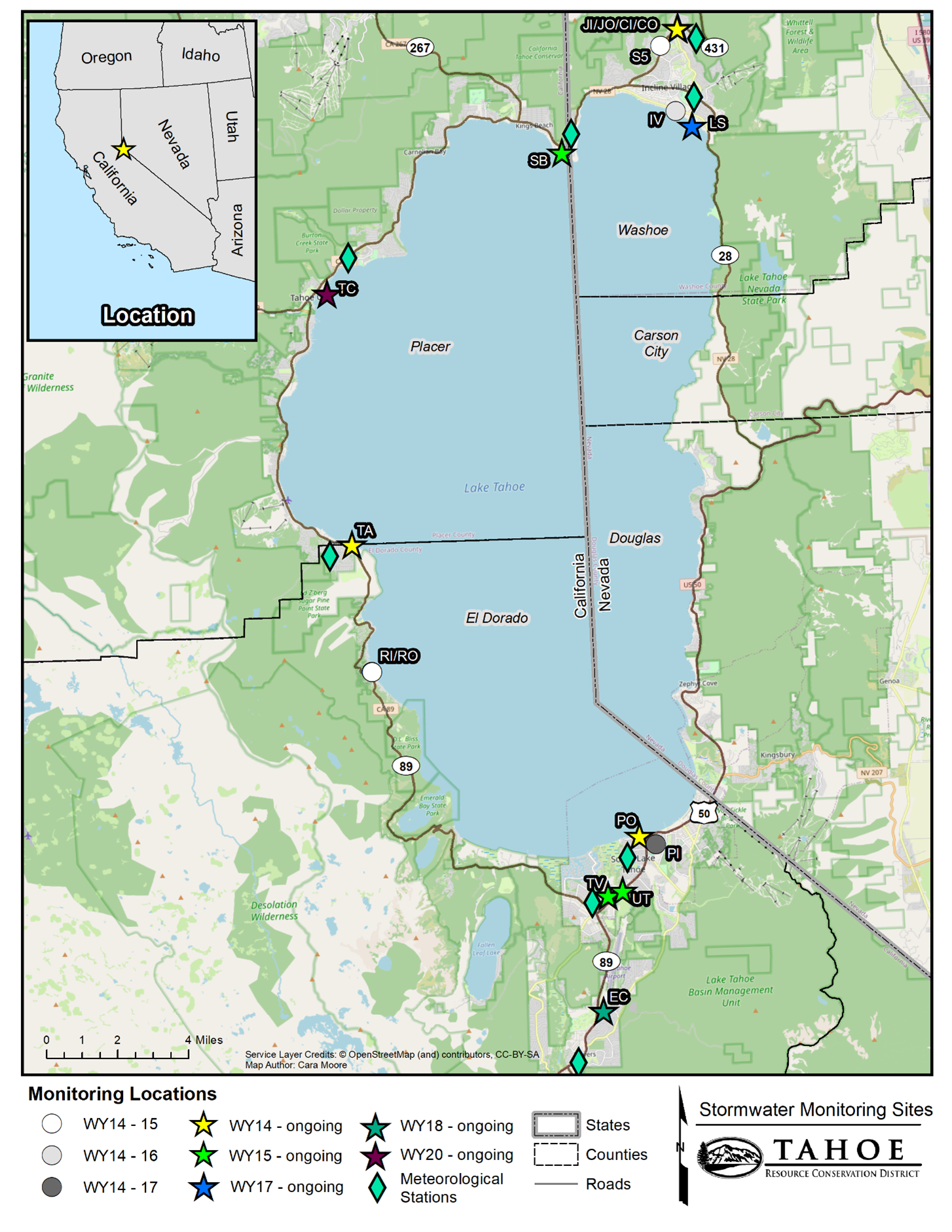Regional Stormwater Monitoring Program (RSWMP)
The Regional Stormwater Monitoring Program (RSWMP), developed in 2015, is a collaboration between the Tahoe RCD and the seven jurisdictions required to comply with the Total Maximum Daily Load (TMDL). The TMDL is a plan to restore lake clarity to 1969 levels, which is about 100 feet of clarity. TMDL regulations require California and Nevada jurisdictions (City of South Lake Tahoe, El Dorado County, Placer County, the California Department of Transportation, Douglas County, Washoe County, and the Nevada Department of Transportation) to take measures to decrease pollutant loading to Lake Tahoe from urbanized areas by implementing pollutant controls to decrease fine sediment particle (particles less than 16 microns) and nutrient (nitrogen and phosphorus) in stormwater. These measures include infiltration basins and swales, filters, better erosion control, and improved traction abrasive application and recovery, among others. The TMDL requires that select urban catchments and Best Management Practices (BMPs) are monitored to ensure that these pollutant reduction strategies are having the desired effect.
Currently, nine urban catchments are monitored for nutrients and sediments, seven for long-term status and trends at catchment outfalls, and two for BMPs. BMPs currently monitored are pavement condition improvement at Elks Club and stormwater filtration at SR431 (see Special Stormwater Studies for more information). Monitoring at some sites began in 2014, with more added in 2015, 2017, 2018, and 2020. Meteorological stations are located within two miles of its paired monitoring site. Long-term catchment outfall sites were selected based on their proximity to Lake Tahoe, diverse land-use, suitable monitoring location, and a reasonably equitable distribution between participating jurisdictions. BMP sites were selected because of their potential efficacy in treating storm water runoff characteristic of the Lake Tahoe Basin, the broad interest in data regarding the efficiency of the selected BMPs in reducing runoff volumes and pollutant loads (especially fine sediment particles), and the importance of determining maintenance intervals required to retain effectiveness.
For Annual Reports with more information and monitoring findings, please click on the publications and helpful links box on this page.


